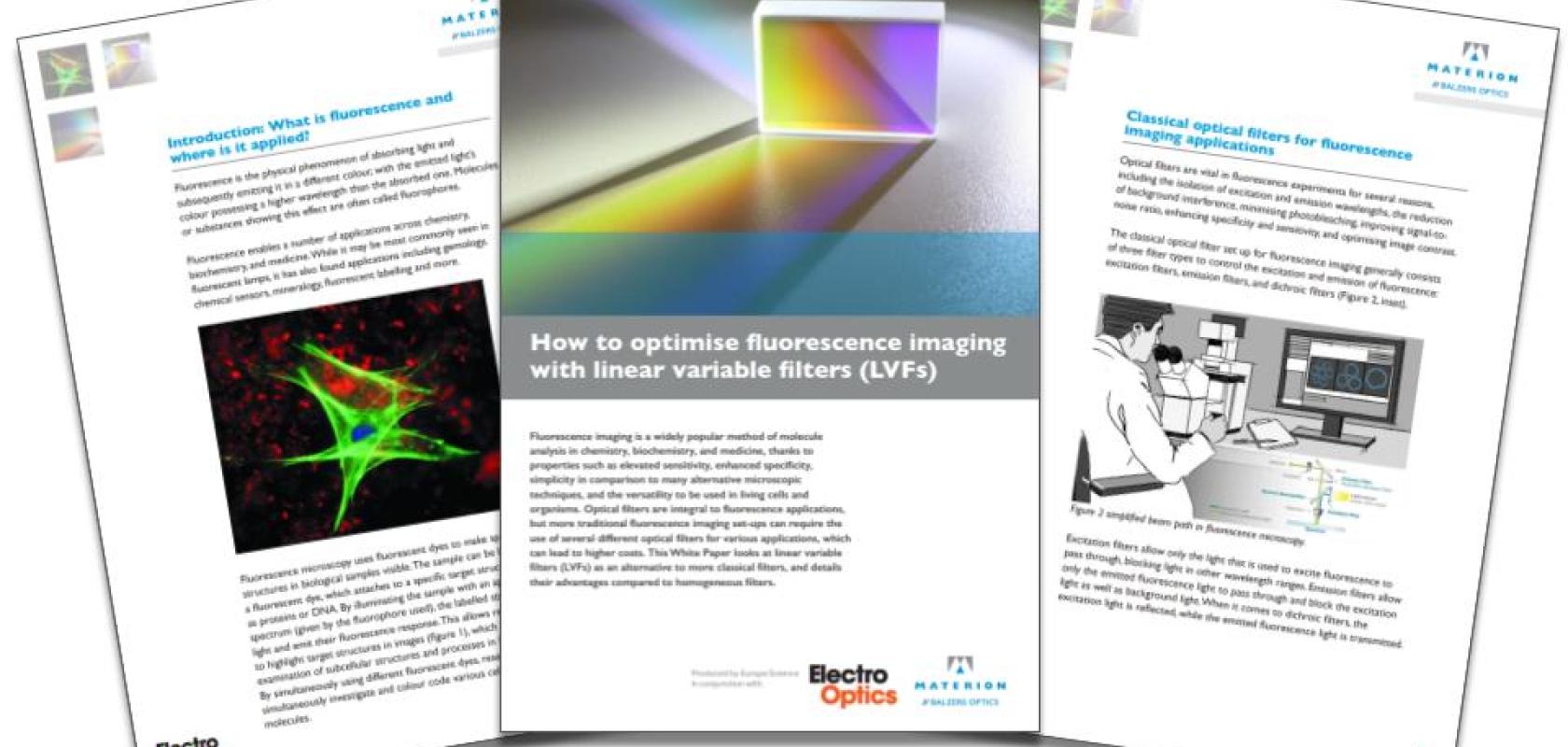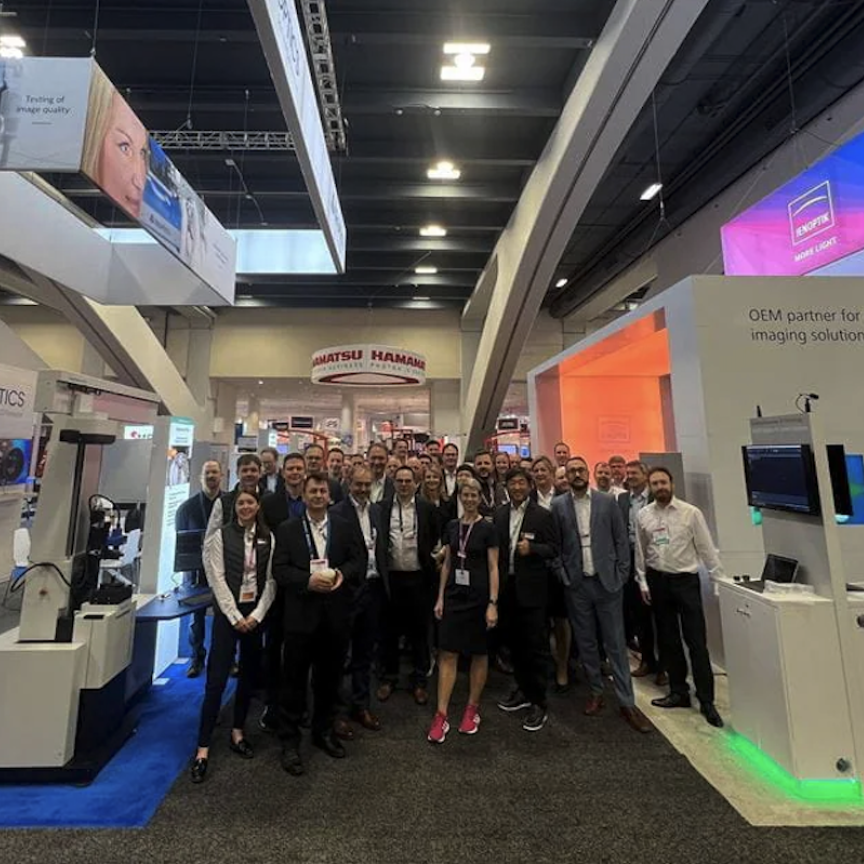How to optimise fluorescence imaging with linear variable filters (LVFs)

How to optimise fluorescence imaging with linear variable filters (LVFs): A White Paper from Materion Optics Balzers
Fluorescence imaging is a widely popular method of molecule analysis in chemistry, biochemistry, and medicine, thanks to properties such as elevated sensitivity, enhanced specificity, simplicity in comparison to many alternative microscopic techniques, and the versatility to be used in living cells and organisms.
Optical filters are integral to fluorescence applications, but more traditional fluorescence imaging set-ups can require the use of several different optical filters for various applications, which can lead to higher costs. This White Paper looks at linear variable filters (LVFs) as an alternative to more classical filters, and details their advantages compared to homogeneous filters.
What this White Paper covers
- An introduction to fluorescence and where is it applied
- The different optical filter set ups for fluorescence imaging applications
- The challenges surrounding the classical filter approach for fluorescence
- A look at the advantages of LVFs compared with homogeneous filters
- A round-up of the unique selling points of Materion Balzers Optics’ LVFs
How can Materion Balzers Optics’ LVFs benefit fluorescence imaging applications?
Materion Balzers Optics leads in LVF technology, using plasma-assisted reactive magnetron sputtering to provide low absorption, for better spectral transmission properties.
Materion’s LVFs allow for even the most complex designs, with hundreds of individual layers made possible. This capability ensures an exceptional rejection of unwanted light, reaching optical densities of up to 8. This achievement of combining high pass range transmissions and deep blocking allows more contrast-rich images, a critical factor in fluorescence microscopy.
The company's LVFs are also designed to enable fast and steep spectral transitions between pass and block ranges, which is an important characteristic when it comes to using fluorophores with their excitation and emission spectra close to each other.

